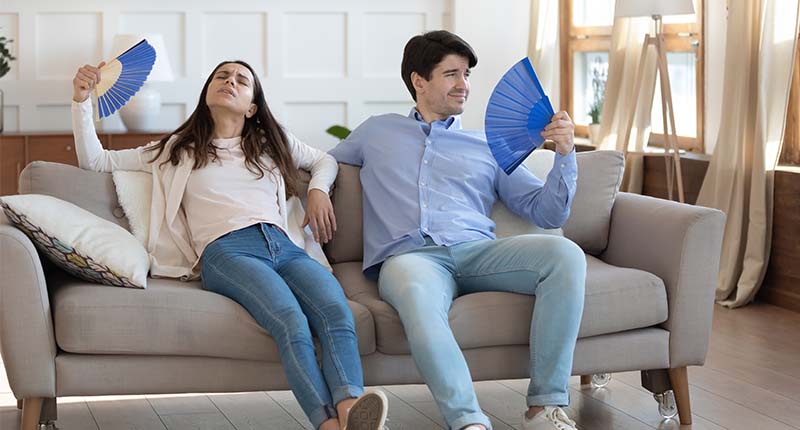Uneven home temperatures can be frustrating, especially when some rooms feel too hot while others are too cold. At Chancey & Reynolds, we understand the importance of maintaining consistent comfort in your home. Let’s explore common reasons for temperature imbalances and how you can address them for a more comfortable living space.

Inadequate Insulation and Poor Sealing
Poor insulation or air leaks around windows and doors can lead to uneven temperatures in your home. When rooms are not properly insulated, hot or cold air escapes, making it harder for your HVAC system to maintain a consistent temperature.
Solution: Inspect your windows and doors for drafts and consider upgrading insulation in your attic, walls, or floors to improve energy efficiency and temperature control.
HVAC System Issues
Your HVAC system plays a major role in maintaining comfort. Problems such as clogged filters, poor maintenance, or an incorrectly sized system can cause certain rooms to be hotter or colder than others.
Solution: Regularly changing your HVAC filters and scheduling professional maintenance ensures your system runs efficiently and distributes air evenly throughout your home.
Airflow Problems in Ductwork
Blocked, leaky, or poorly designed ductwork can lead to airflow issues, causing uneven temperatures in different areas of your home. Ductwork problems can reduce your system’s ability to deliver consistent heating or cooling.
Solution: Have your ductwork inspected by a professional to identify any leaks or blockages and make necessary repairs to improve airflow and temperature consistency.
Thermostat Malfunctions or Placement Issues
A malfunctioning or poorly placed thermostat can cause inaccurate temperature readings. If your thermostat is located in an area that isn’t representative of your home’s overall temperature, it may cause your HVAC system to overheat or overcool certain rooms.
Solution: Consider upgrading to a smart thermostat that can more accurately manage the temperature throughout your home. If necessary, relocate your thermostat to a more central location for accurate readings.
Sunlight and Room Exposure
Rooms that receive excessive sunlight during the day may feel warmer, while those positioned in shaded areas may remain cooler. This natural temperature variation can affect overall comfort in your home.
Solution: Use window treatments like blinds or curtains to block excess sunlight, or consider installing a zoned HVAC system to manage temperature differences between rooms more effectively.
Poor Ventilation and Humidity Control
Improper ventilation can cause a stuffy, uncomfortable home environment. Additionally, humidity levels can impact comfort—high humidity can make your home feel hotter, while low humidity can make it feel colder.
Solution: Ensure proper ventilation in your home, especially in high-moisture areas like bathrooms and kitchens. Consider using a dehumidifier or humidifier to maintain optimal humidity levels and improve overall comfort.
When to Call a Professional for Help
If you’ve tried resolving temperature imbalances on your own but still find your home uncomfortable, it’s time to call in a professional. At Chancey & Reynolds, we specialize in diagnosing and fixing home comfort issues. Whether it’s a problem with your HVAC system, ductwork, or insulation, our team can provide expert solutions to restore your home’s comfort.
Call on Chancey & Reynolds
Contact Chancey & Reynolds today to schedule an HVAC inspection and let us help you achieve the perfect home temperature. Whether you need repairs, upgrades, or a system tune-up, we’re here to keep your home comfortable year-round.





